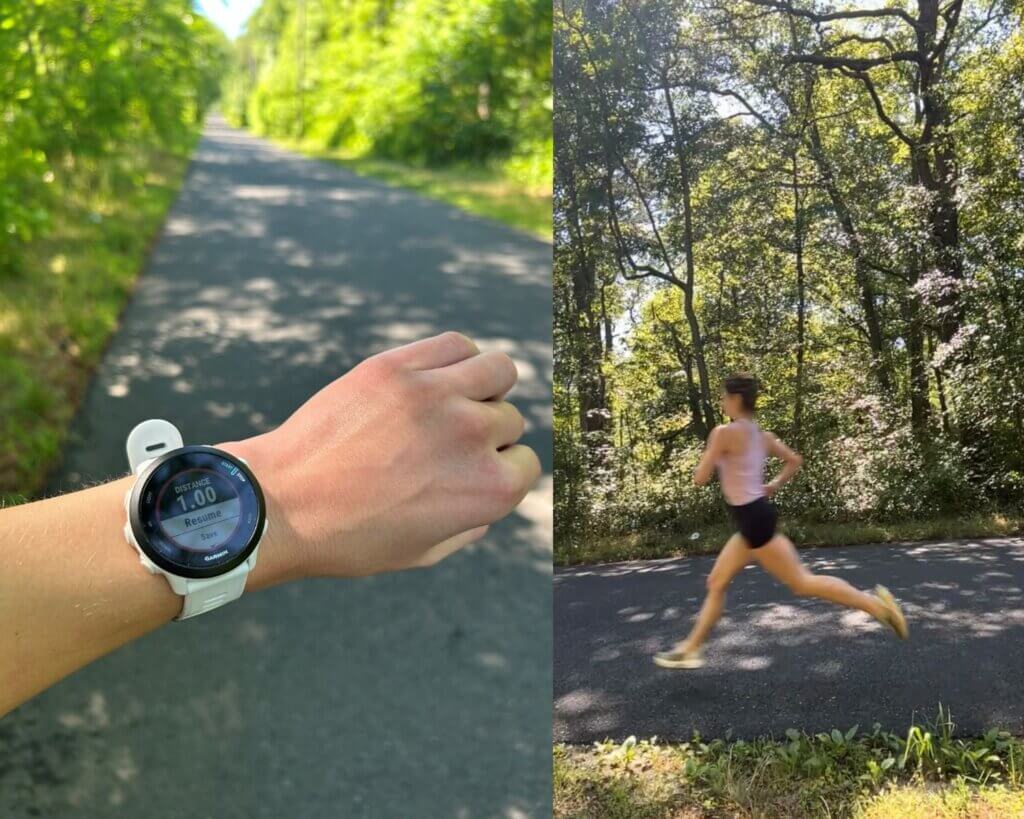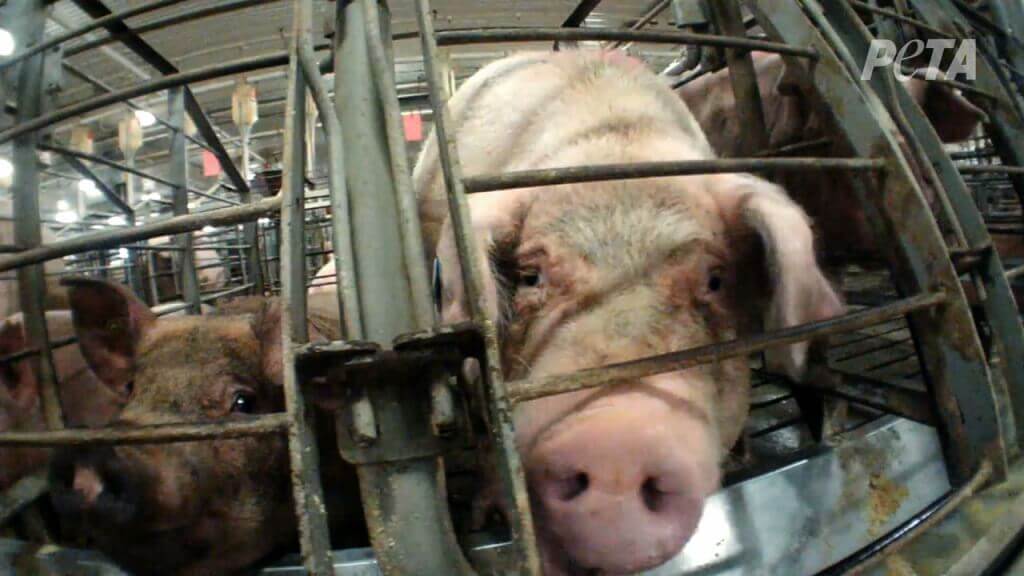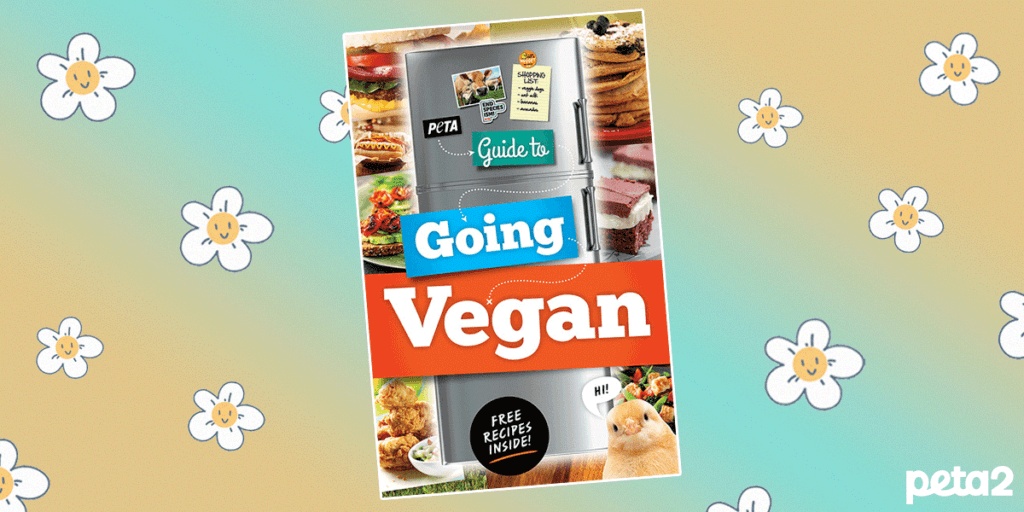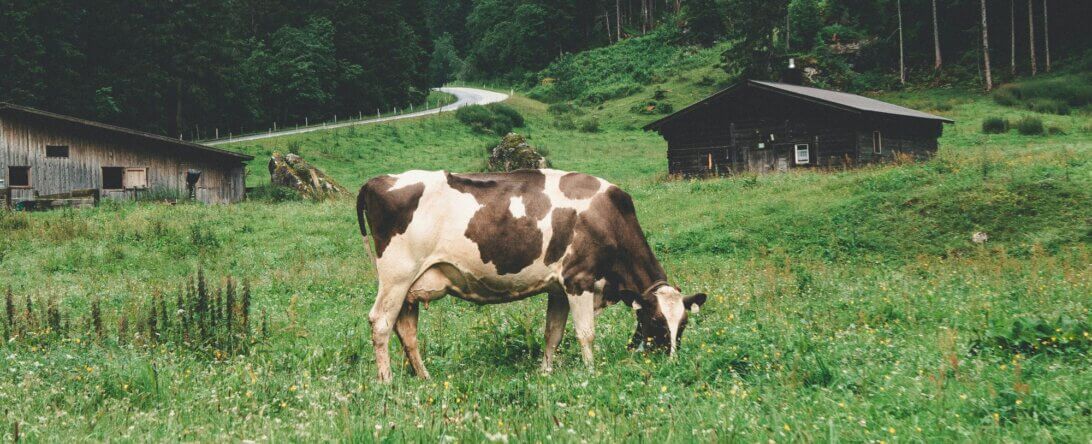14 Reasons to Run 14 Miles for Animals
Running is my passion—something that feels natural to me. Just as a bird was made to fly, I was made to run. But the freedom I feel from running makes me think of animals who are denied the opportunity to experience it. When I decided to go vegan, running became a way for me to spread compassion for animals. Their freedom is never ours to take.
Whether you’re a marathon pro or brand new to running, you can help animals get their freedom by making compassionate choices in your day-to-day life. As a former college runner who’s now a PETA Pack runner, I’m going to take you along with me on an animal-friendly run as I train for my upcoming 10K race.
Since the best way to train is to run a ton, here are 14 reasons why I’m motivated to run 14 miles—more than double the length of the race—for animals:
Mile 1: 🐵 Monkeys Used for Experiments
Instead of playing or foraging for food with their families in a forest, monkeys are used in cruel experiments and then killed. They live in fear and are denied their freedom, but it doesn’t have to be this way! Animal-free methods—which are lifesaving for monkeys and humans alike—are available and reliable.

Mile 2: 🐮 Baby Cows Taken From Their Mothers
Calves in the dairy industry are considered a “waste product,” as mother cows must be pregnant to make milk. After cows give birth, humans take away their babies and steal their milk. It gets worse from there: Calves are kept in crates so they can’t move around—just to prevent them from building any muscle that would ruin the taste of their flesh when it’s sold as veal.

The dairy industry claims that milk comes from happy cows. You know what would make cows truly happy? If we used oat, almond, or plant-based milks in our pre-workout shakes instead!

Mile 3: 🐰 Rabbits Used for Angora
If I were a rabbit, I’d hop around, eat grass stems, and make burrows. In nature, rabbits roam free in areas as wide as 1 square mile. But in the angora industry, they spend their lives confined to filthy cages—and they scream as their fur is ripped out to make sweaters, hats, and mittens.

We can stop supporting the brands that continue to use angora in their clothing. By wearing innovative, animal-friendly material—including seaweed wool and vegetable cashmere—you can look fashionable and be compassionate at the same time!

Mile 4: 🐬 Dolphins Who Live in Tiny Tanks at SeaWorld
In nature, dolphins can swim up to 60 miles a day. But at marine parks, they swim in endless circles. Running on a treadmill is bad enough, but can you imagine living on an underwater one? Animals at marine parks are also kept in cramped conditions, as tanks there are often the equivalent of bathtubs for humans. Dolphins, orcas, beluga whales, and sea lions deserve to live in their homes in nature.

Mile 5: 🐶 Bulldogs Who Struggle to Breathe
While that wrinkly face may look adorable, it’s not so fun for the dogs who live with it. Bred to have a flat face, bulldogs struggle to breathe through an obstructed airway and nasal canal. This deformity makes running and playing not so easy for them. To make matters worse, sweat and dirt can build up under their wrinkles, putting them at risk of infection. No dog deserves to be bred to suffer for “looks.”
Want to help reduce the demand for breathing-impaired breeds? Adopt—don’t shop! Many animals need loving, permanent homes.

Mile 6: 🐸 Frogs Used for Classroom Dissection
Frogs should be sunning themselves on rocks or taking dips in ponds, but these “learning tools” are often taken from their homes in nature, shipped by suppliers, and killed for dissection. There are several animal-free ways to study biology, including virtual dissection websites and dissectible models. Let’s leave these little amphibians alone—like us, they deserve a life of freedom and happiness.

Mile 7: 🐷 Mother Pigs Who’ve Never Seen the Sun
At sanctuaries, pigs love to root around with their snout and play by headbutting balls. But on factory farms, mother pigs are kept in gestation and farrowing crates. They can’t even turn around or reach their babies! Pigs who are raised and killed for their flesh never experience even the slightest comfort in their lives.

When I run, I want to show people the strength of a vegan athlete. Quitting would be the same as quitting on animals—which is something I’ll never do.

Mile 8: 🦆 Ducks Used for Their Feathers
Whether you’re traveling for a race, competing locally, or just resting up for your usual run, use down-free pillows for a good night’s sleep. When you stay at a hotel, don’t hesitate to ask the front desk for cotton or synthetic alternatives to down pillows. And invest in ethical, down-free options for your home.
I learned about asking for alternatives the hard way during my early racing days. I’d arrive at a hotel exhausted only to find down pillows there that made me feel uneasy due to the cruel practices involved in their production. Don’t resort to using a jacket as a pillow like I did—simply request an alternative. By choosing feather-free pillows, you can rest easy and perform better, knowing your comfort doesn’t come at the expense of birds.

Mile 9: 🐕 Dogs Used in the Iditarod Death Race
It’s accurate to call the Iditarod in Alaska a “death race,” as more than 150 dogs have died for this cruel event—including from asphyxiation, heart attacks, freezing, having too much fluid in their lungs, or being hit by a vehicle. When not forced to race, dogs are kept chained up outside with little to no shelter in all weather extremes. During the race itself, dogs may suffer from orthopedic injuries or bleeding stomach ulcers. The Iditarod trail is nearly 1,000 miles long, which would be like forcing a human to run four marathons a day for up to two weeks straight! I love running, but noooo thanks.

Mile 10: 🐟 Betta Fish Sold at Pet Stores
Betta fish should be respected as the individual they are—not sold as “pets” and office decor. Before they arrive at pet stores, the fish are typically shipped in plastic bags—often with barely enough water to cover their bodies. It’s no wonder they look sick or already dead when we see them stocked on shelves in what look like Tupperware containers. Betta fish deserve to be free and left alone in their natural habitats of marshes and slow-moving streams—not trapped in offices or on bedroom nightstands.

Mile 11: 🐭 Mice and Rats Used in the Forced Swim Test
Believe it or not, the point of the forced swim test, using mice or rats, is to see how effective an antidepressant would be in humans. A mouse or another animal is forced to swim until they give up trying to escape and start to float, which experimenters mistakenly interpret as a sign of depression.

There are so many things wrong with this process. For one, research has proved that the test is no better than a coin toss at predicting whether a new drug will work in humans. On a positive note, I know from personal experience that running can help people improve their mental health. Regular exercise has been shown to help protect against depression and anxiety, so make sure you get moving!

Mile 12: 🐔 Chickens Used for Their Eggs
Have you ever heard of the “female triad”? It’s a medical condition in which an athlete misses or stops having periods, among other things. Every missed period is bad for your bone health. Well, layer hens who are forced to produce a whole bunch of eggs (which is essentially a chicken period) lose way too much calcium in their bones. Eventually, the eggs become soft due to the lack of calcium in the hen’s body, and that’s when she’s slaughtered for her flesh. Some athletes will eat eggs religiously for protein, but I can think of a million ways to get my aminos while not harming chickens.

Mile 13: 🐥 Ostriches Used for Clothing
Ostriches are just like me—they run on two legs and are fast. (They can run up to 43 mph, which is a lot faster than me or any other human alive.) However, people use ostriches’ feathers to make a cruel fashion statement. On that note, why do people wear these weird outfits? Activewear is so much more comfortable and almost always vegan.

Mile 14: 🐴 Horses Abused for Sport
While there are many animals I want to help, I chose helping to end cruelty involved in horse racing as my PETA Pack fundraiser. Here’s why: When I was little, I watched a movie called Spirit: Stallion of the Cimarron. In it, Spirit the horse breaks open some stalls and lets other horses run free. The film had a lasting impact on me, and I still play the soundtrack on my runs to this day. Like all animals, horses are free spirits who deserve to live in peace without being exploited. People may hurt and destroy the bodies of animals, but their spirits and souls always remain.

*****
I hope you enjoyed reading this article and feel inspired to take your athleticism up a level for animals. Need help fueling your workout? Check out our “Guide to Going Vegan” for super-easy recipes!
Text peta2 to 30933 for ways to help animals, tips on compassionate living, and more!

Terms for automated texts/calls from peta2: http://peta.vg/txt. Text STOP to end, HELP for more info. Msg/data rates may apply. U.S. only.





